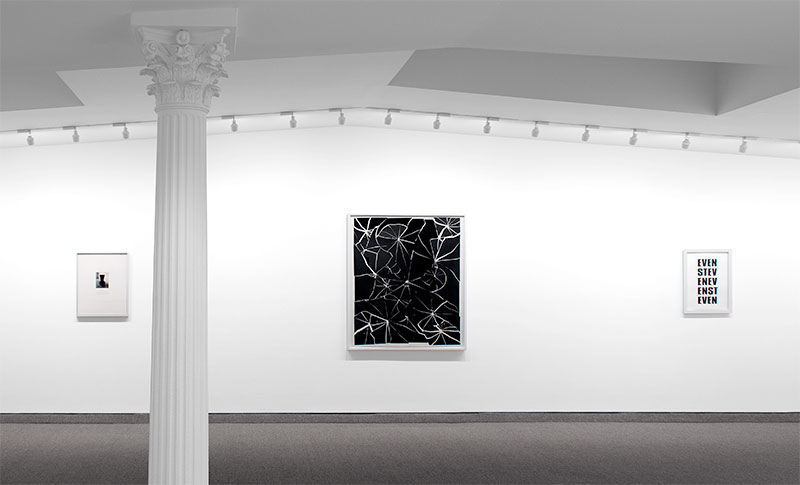
Exhibition View
Featuring works by Richard Artschwager, Bernd & Hilla Becher,
Tara Donovan, Idris Khan, Kay Rosen, Haim Steinbach, and Sarah Sze
“I would hate to think that my work is perceived as a portrayal of victimization. It is not enough for me to relate an experience through the work only to have a viewer say, ‘Oh, that’s too bad,’ and walk away from it. I want to relate the dynamics of a situation, both how that situation occurs and how it affects people’s lives. In another sense, the work is not answer-oriented. It’s intentionally left open-ended. There’s not a resolution that just solves everything.” (Lorna Simpson)
“Syntheses” consists of works by eight artists: Richard Artschwager, Bernd & Hilla Becher, Tara Donovan, Idris Khan, Kay Rosen, Lorna Simpson, Haim Steinbach and Sarah Sze. The exhibition is conceived of as a spectrum. Each of the works in the show is somewhere different along the line of variation – variations on the ideas of the found and altered and how that familiarity (or lack thereof) affects a viewer.
At one end of the spectrum, you have Haim Steinbach, who presents two pairs of actual salt and pepper shakers (one the inexpensive kind as made by Halco and the other, manufactured by Tour d’Argent out of silver) presented on a polished, mirrored stainless steel shelf. The work is as much about these forms in relation to the world as it is about the relationships between the two sets.
At the other end is Lorna Simpson’s “Van Der Zee Prop Vase”, a piece that began with the artist’s appreciation for James Van Der Zee’s photography, moved through creating surrogates for glass objects in his photos and continued to the final result – a photo of the surrogate, minus any visual clues to the original photograph, juxtaposed with a text:
Reclining nude,
date unknown
James Van DerZee
A smiling woman rests her face on her right arm as her left arm crosses her breasts. Fabric is draped over the edge of the couch around her hips and continues to the floor. Her legs are exposed, knees bent, and her left foot is tucked under her right. Flowers are strewn over the edge of the couch and on to the floor. An upside down vase sits on the floor, as if its position and the arrangement of flowers had been disturbed.
Simpson combines these processes and elements to explore identity through the assumptions provided by her visual clues.
Along with these two radically different approaches to found objects, exist the other artists’ works, with each one taking a unique, yet informed approach to using what has come before to make something that gives a viewer a new way of seeing.
Tara Donovan uses plate glass and a printing press to create a unique ‘drawing’ from the impression of the entire sheet of broken glass thus presenting motion, stillness, wholeness and fragility, simultaneously.
Kay Rosen uses both the definition of and formal make up of the phrase, “Even Steven” to define its visual presentation.
Richard Artschwager took the graphic form of a question mark and turns it into a three dimensional sculpture that, depending upon where one stands, sees it as either a question mark or exclamation mark, both of which are illustrations of punctuationand also enactments of the experience of seeing such a mark “in the round”.
Bernd and Hilla Becher made photographs of obsolete structures and presented them in “typologies” where the dates and locations are non-sequential. Similarities and differences are observed in formal ways, yet the issues of time, obsolescence and familiarity will always be in flux for a viewer.
Idris Khan took the Bechers’ exploration and literally layered their images on top of each other, so as to compress the imagery to create a seemingly motion-filled ghost of the whole project where the Bechers’ entire activity is seen in the rear-view mirror, yet forever here, now.
Sarah Sze’s work embodies a similar roll to that of the Bechers, Khan and Artschwager, combined. “Ripe Fruit Falling” utilizes imagery and techniques Sze has used in other works, yet compresses them all into an almost two dimensional object. Vignettes and varying perspectives add to the dynamism and multiple approaches of reading the ‘scenario’ of her work.
As one can see, varying among the works is what is found, what is altered, what is added, what is whole and when it is complete.
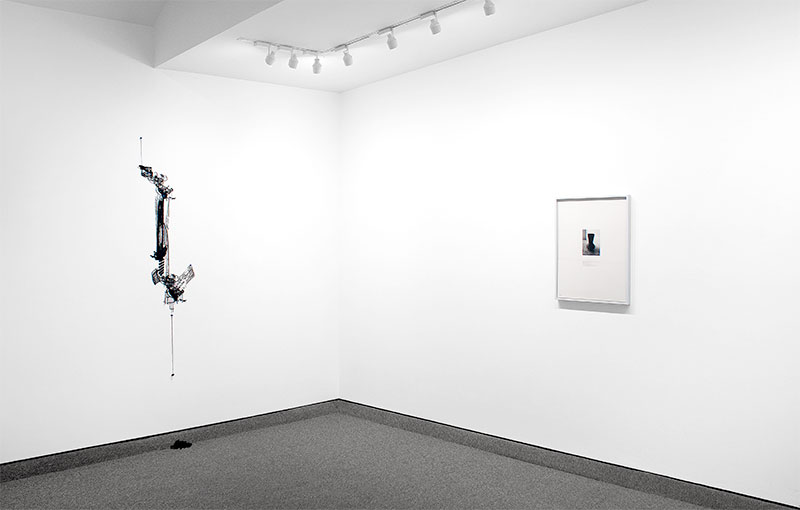
Approximately 75 x 20 x 3/4 inches (190.5 x 50.8 x 1.9 cm)
Edition of 18, 6 AP, 4 PP
Signed on reverse
(Inventory #27870)
Approximately 75 x 20 x 3/4 inches (190.5 x 50.8 x 1.9 cm)
Edition of 18, 6 AP, 4 PP
Signed on reverse
(Inventory #27870)
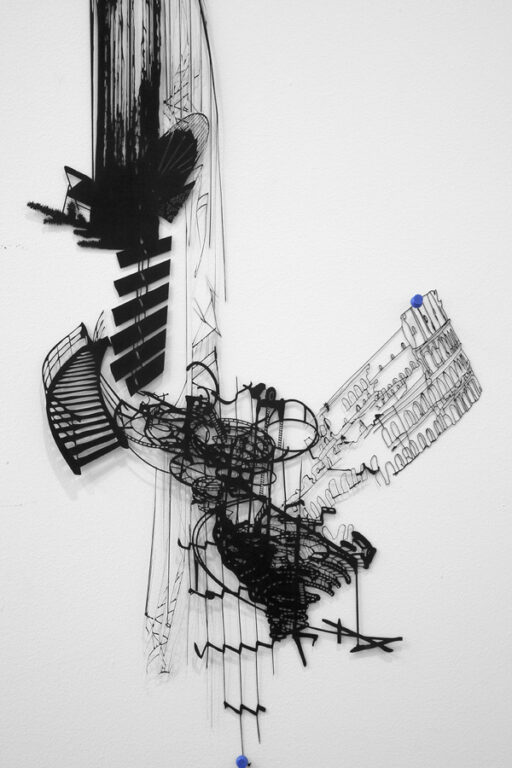
Image size: 9 1/4 x 5 1/8 inches (23.5 x 13 cm)
Paper size: 25 x 19 1/2 inches (63.5 x 49.5 cm)
Edition of 95, and 10 PPs
Signed, titled and dated lower right and numbered lower left in graphite
(Inventory #29379)
Image size: 9 1/4 x 5 1/8 inches (23.5 x 13 cm)
Paper size: 25 x 19 1/2 inches (63.5 x 49.5 cm)
Edition of 95, and 10 PPs
Signed, titled and dated lower right and numbered lower left in graphite
(Inventory #29379)
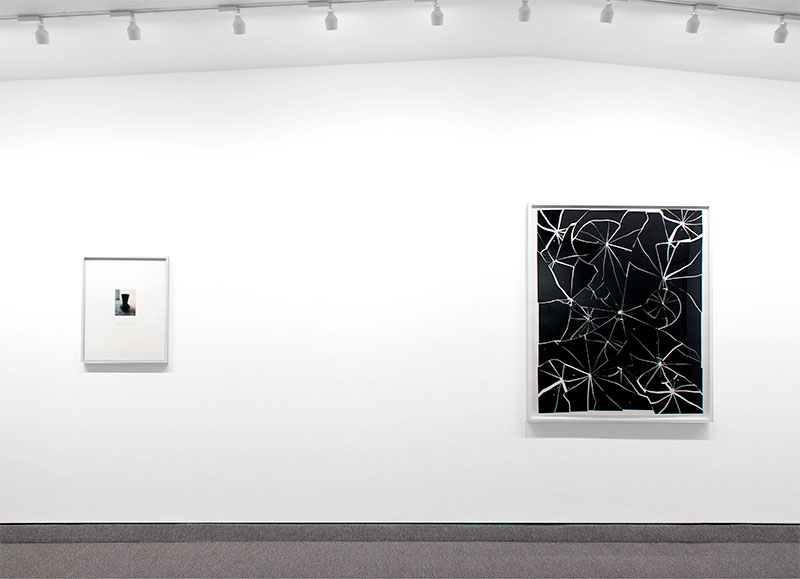
Image/paper size: 51 1/2 x 42 1/4 inches (130.8 x 107.3 cm)
Frame size: 54 5/8 x 45 5/8 x 1 3/4 inches (138.7 x 115.9 x 4.4 cm)
Signed and dated lower right in graphite
(Inventory #29638)
Image/paper size: 51 1/2 x 42 1/4 inches (130.8 x 107.3 cm)
Frame size: 54 5/8 x 45 5/8 x 1 3/4 inches (138.7 x 115.9 x 4.4 cm)
Signed and dated lower right in graphite
(Inventory #29638)
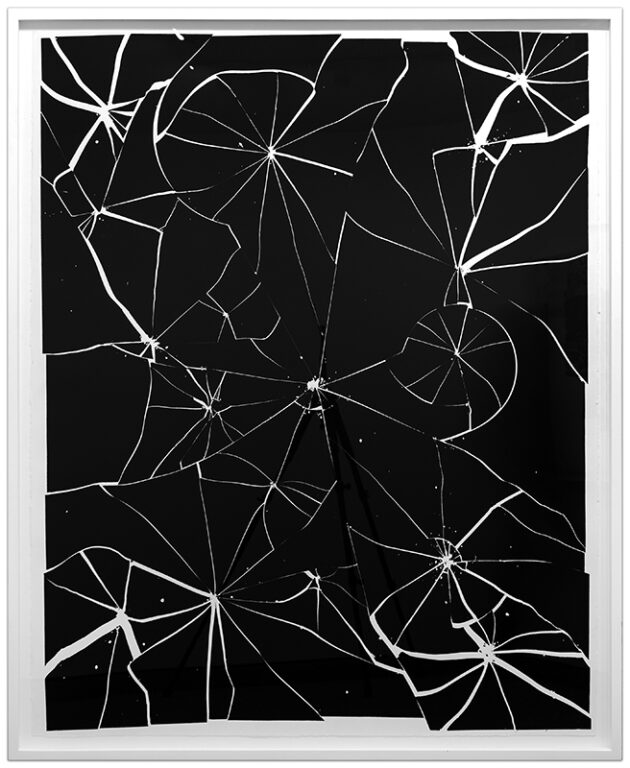
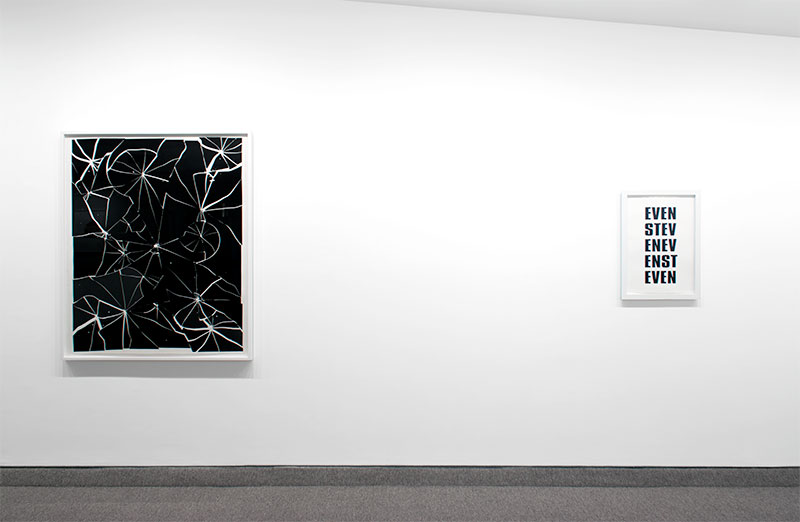
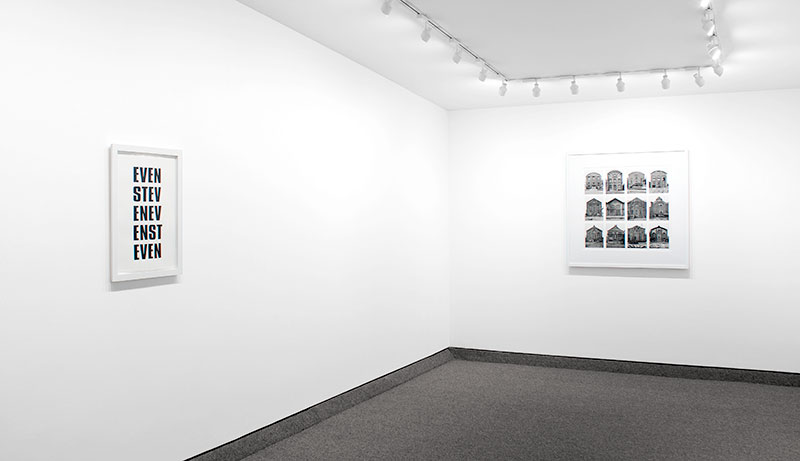
Image/paper size: 22 1/2 x 15 inches (57.2 x 38.1 cm)
Frame size: 26 x 18 3/4 inches (66 x 47.6 cm)
Signed on reverse
(Inventory #29252)
Image/paper size: 22 1/2 x 15 inches (57.2 x 38.1 cm)
Frame size: 26 x 18 3/4 inches (66 x 47.6 cm)
Signed on reverse
(Inventory #29252)
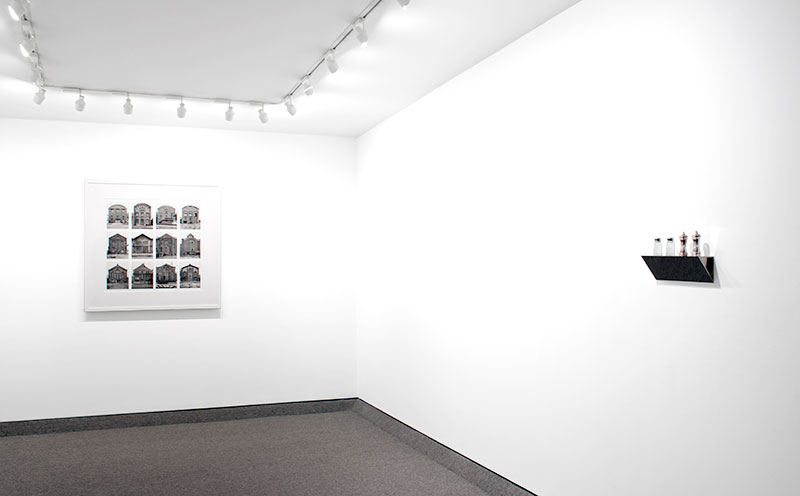
Image size: 27 5/8 x 29 1/4 inches (70.2 x 74.3 cm)
Paper size: 35 1/2 x 36 5/8 inches (90 x 93 cm)
Frame size: 41 x 42 1/4 inches (104.1 x 107.3 cm)
Edition of 40
Signed “B Becher” and “Hilla Becher”, numbered all on verso
(Inventory #20613)
Image size: 27 5/8 x 29 1/4 inches (70.2 x 74.3 cm)
Paper size: 35 1/2 x 36 5/8 inches (90 x 93 cm)
Frame size: 41 x 42 1/4 inches (104.1 x 107.3 cm)
Edition of 40
Signed “B Becher” and “Hilla Becher”, numbered all on verso
(Inventory #20613)
8 1/4 x 13 x 3 3/8 inches (21 x 33 x 8.6 cm)
Edition of 15
Signed, dated and numbered on reverse of mirrored shelf, all etched
(Inventory #29401)
Haim Steinbach is interested in the shared social rituals of collecting, arranging and presenting objects. For Steinbach, objects have a function similar to language. People have feelings about objects, project emotions onto them and also communicate through these “things”. In his ‘display’ works, the artist uses the shelf as a device to highlight otherwise ordinary objects, allowing the viewer to consider aesthetic, cultural and social associations without prejudice or presumption. In “Untitled (Halco and Tour d’Argent salt and pepper shakers)”, Steinbach presents two pairs of functional salt and pepper shakers (one the inexpensive kind as made by Halco and the other, more “elegant”, manufactured by Tour d’Argent in silver). These two pairs are exhibited on a polished, mirrored stainless steel shelf. The shakers objects come from vastly different social and cultural contexts and are put together in a way that is analogous to the arrangement of words in a poem, or to the musical notes in a score.
Steinbach has said that his work is “about vernacular, which is a common form of language: things that we make, express and produce” and that it is “not only about selecting and arranging objects of my own choice, but also presenting the objects chosen by others”. He often refers to the structures he builds for the objects he presents as “framing devices”. Steinbach sets up comparisons within his work between ‘high’ versus ‘low’ culture, the unique versus the multiple, the personal versus the universal.
8 1/4 x 13 x 3 3/8 inches (21 x 33 x 8.6 cm)
Edition of 15
Signed, dated and numbered on reverse of mirrored shelf, all etched
(Inventory #29401)
Haim Steinbach is interested in the shared social rituals of collecting, arranging and presenting objects. For Steinbach, objects have a function similar to language. People have feelings about objects, project emotions onto them and also communicate through these “things”. In his ‘display’ works, the artist uses the shelf as a device to highlight otherwise ordinary objects, allowing the viewer to consider aesthetic, cultural and social associations without prejudice or presumption. In “Untitled (Halco and Tour d’Argent salt and pepper shakers)”, Steinbach presents two pairs of functional salt and pepper shakers (one the inexpensive kind as made by Halco and the other, more “elegant”, manufactured by Tour d’Argent in silver). These two pairs are exhibited on a polished, mirrored stainless steel shelf. The shakers objects come from vastly different social and cultural contexts and are put together in a way that is analogous to the arrangement of words in a poem, or to the musical notes in a score.
Steinbach has said that his work is “about vernacular, which is a common form of language: things that we make, express and produce” and that it is “not only about selecting and arranging objects of my own choice, but also presenting the objects chosen by others”. He often refers to the structures he builds for the objects he presents as “framing devices”. Steinbach sets up comparisons within his work between ‘high’ versus ‘low’ culture, the unique versus the multiple, the personal versus the universal.
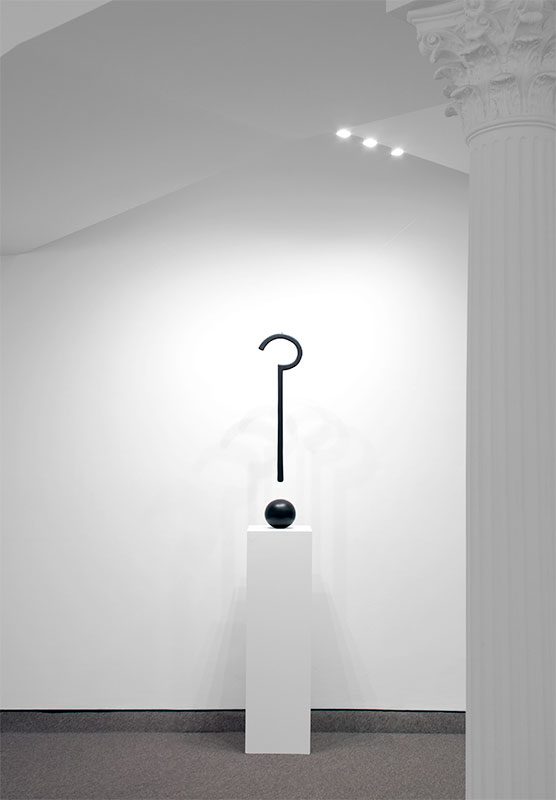
29 1/4 x 8 7/8 x 6 inches (74.3 x 22.5 x 15.2 cm)
Edition of 6
(Inventory #28281)
29 1/4 x 8 7/8 x 6 inches (74.3 x 22.5 x 15.2 cm)
Edition of 6
(Inventory #28281)
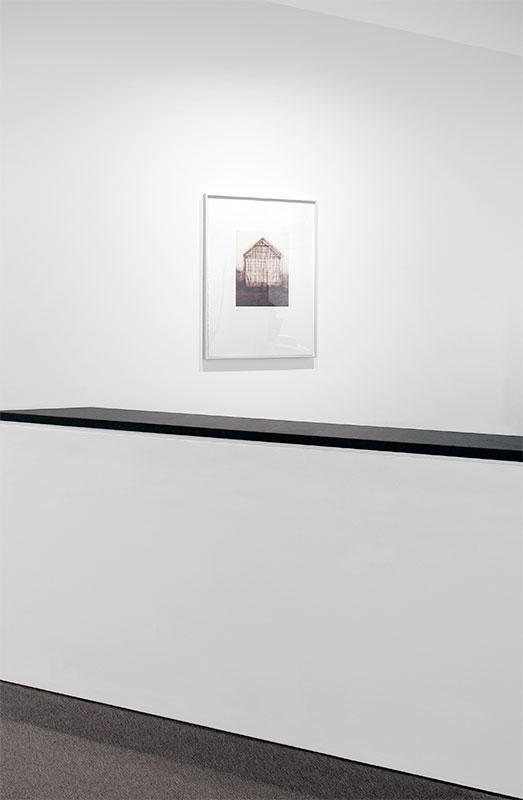
Image size: 13 x 10 inches (33 x 25.4 cm)
Paper size: 27 x 19 5/8 inches (68.5 x 50 cm)
Frame size: 28 x 21 inches (71.1 x 53.3 cm)
Edition of 100
Signed and dated lower right, numbered lower left in graphite
(Inventory #28752)
Image size: 13 x 10 inches (33 x 25.4 cm)
Paper size: 27 x 19 5/8 inches (68.5 x 50 cm)
Frame size: 28 x 21 inches (71.1 x 53.3 cm)
Edition of 100
Signed and dated lower right, numbered lower left in graphite
(Inventory #28752)
No results found.
10 Newbury Street, Boston, Massachusetts 02116
617-262-4490 | info@krakowwitkingallery.com
The gallery is free and open to the public Tuesday – Saturday, 10am – 5:30pm